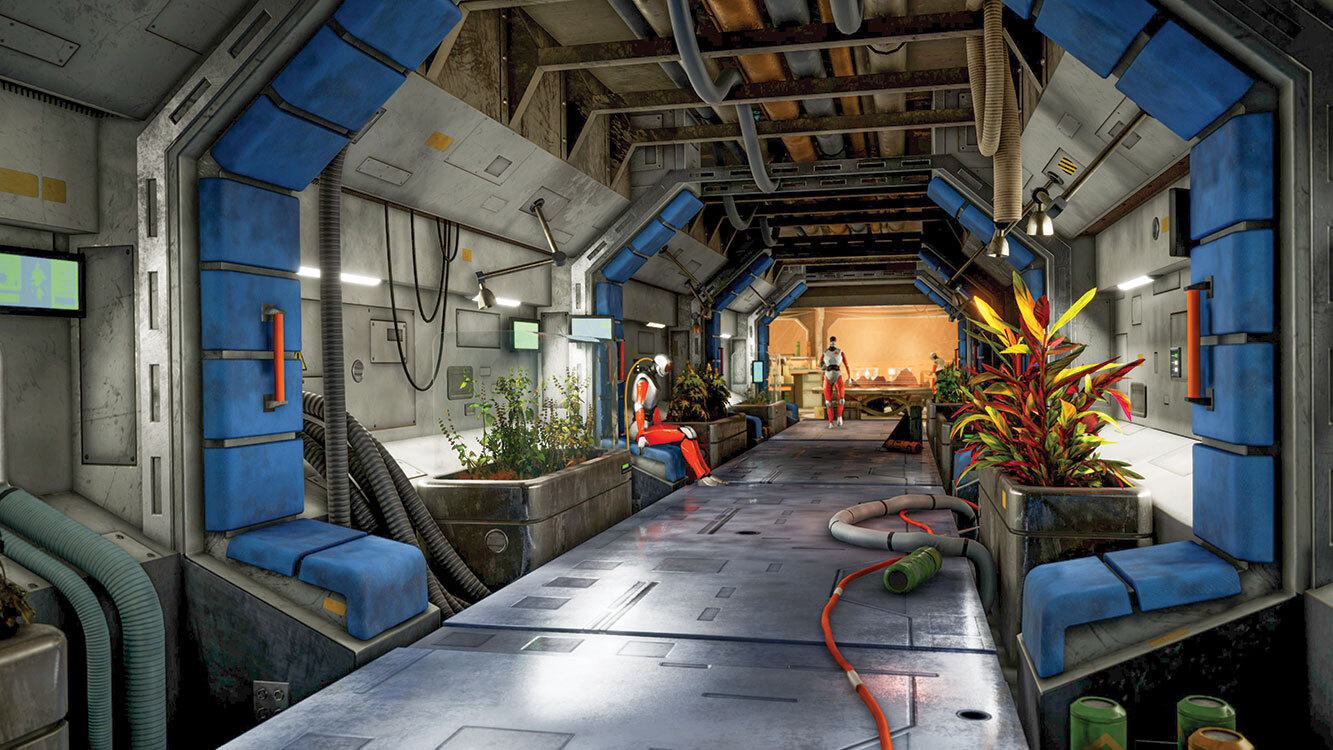by Rod Jones

A quick glance at a list of career fields indicates one of the reasons why “∞¿«…Á«¯ University started its Game Design & Animation program last year.
Aside from the obvious fields as noted in the program’s name, there are multiple healthy industries for graduates to work in, including 3D modeling, programming, sound design, storyboarding, simulation, web design, architecture, and much more.
“There’s a whole world of technology for these skills. It’s more than just for entertainment,” said program Chairman Jeff Price, who came from another university to essentially build OCU’s program from the ground up.
Some skills serve a higher public purpose, like using game engines to train for air traffic control systems. There’s extra job satisfaction that comes from seeing how something one creates can help people, make profits, and improve living standards.
Still, it is hard to ignore the entertainment-related careers. The teamwork nature of animated films accounts for dozens of individual tasks and jobs — separate duties like texturing and coloring, for instance.

Price pointed out a few key differentiators that set OCU’s program above many others. One is faculty who stay professionally involved in projects outside of the university while also teaching.
“Right now, one of the projects I’m working on is a simulator for motorcycle repair. You don’t see many game design faculty members teaching these skills while also creating their own work,” he said.
Price pointed out another factor that sets OCU apart. The university has a strong existing creative arts core, so other visual arts offerings can serve as additional creative outlets for students. Things like ceramics, painting, drawing, and photography help students grow in graphic design and animation.
“Some of the muscle memory from other media has similarities to this work. The tools and techniques from those other forms will make your digital work more authentic,” he said.
In fact, Price said when evaluating prospective students, he’s much more interested in their creativity as a whole than he is with their knowledge of software and technology.
“You don’t have to be a computer expert to get into this program. We’ll teach those skills,” he said. “The main thing we look for are artists who want to jump into technology, not the other way around.”
Price said yet another differentiator is the robust scholarship offerings. Beginning with the Fall 2021 semester, students majoring in Game Design & Animation will automatically be awarded a scholarship.
Price said OCU plans to expand the program, particularly in the number of faculty members.
Evan Barreiro was one of Price’s star students until he finished his coursework in December. His specialties are in environment design and 3D modeling, and he’s been at it since childhood.
“When I was about 8, I started taking 3D animation classes,” Barreiro said. “I saw a software demonstration when I was 10, and I’ve been into this ever since.”
Barreiro, originally from Minnesota, learned a lot of skills growing up by watching tutorials. His formal education began when he took classes at a tech school while earning a diploma as a home school student.
Barreiro said he likes how the new Game Design & Animation lab is laid out, featuring 20 work stations in a 1,100 square-foot space inside the Norick Art Center. The program recently added a motion-capture studio.
Barreiro now works remotely from Tulsa for a software design and development company based in “∞¿«…Á«¯. He said the job opportunities for his industry abound.
“This is a very large field,” Barreiro said. “There are a lot of people doing a lot of different things.”

